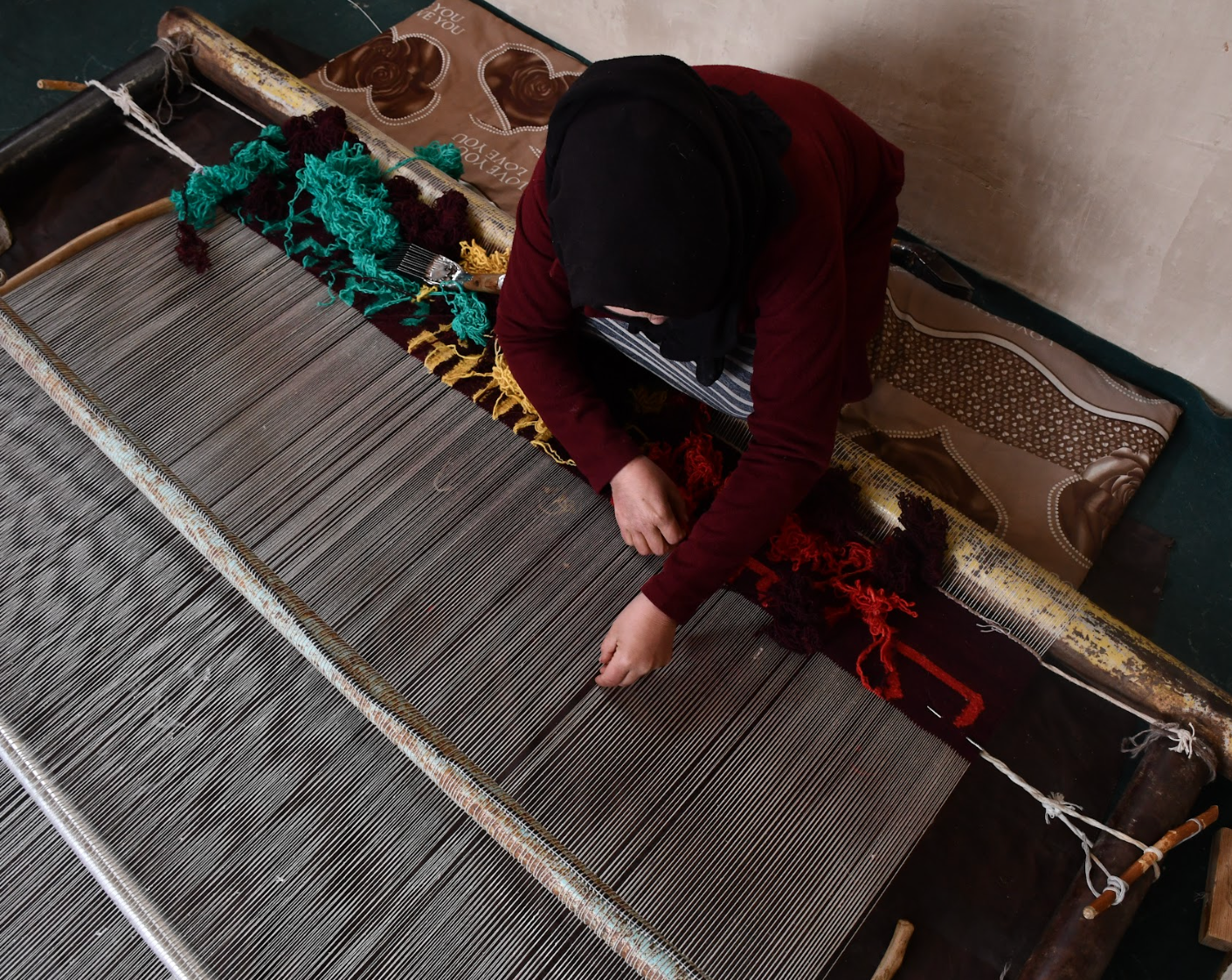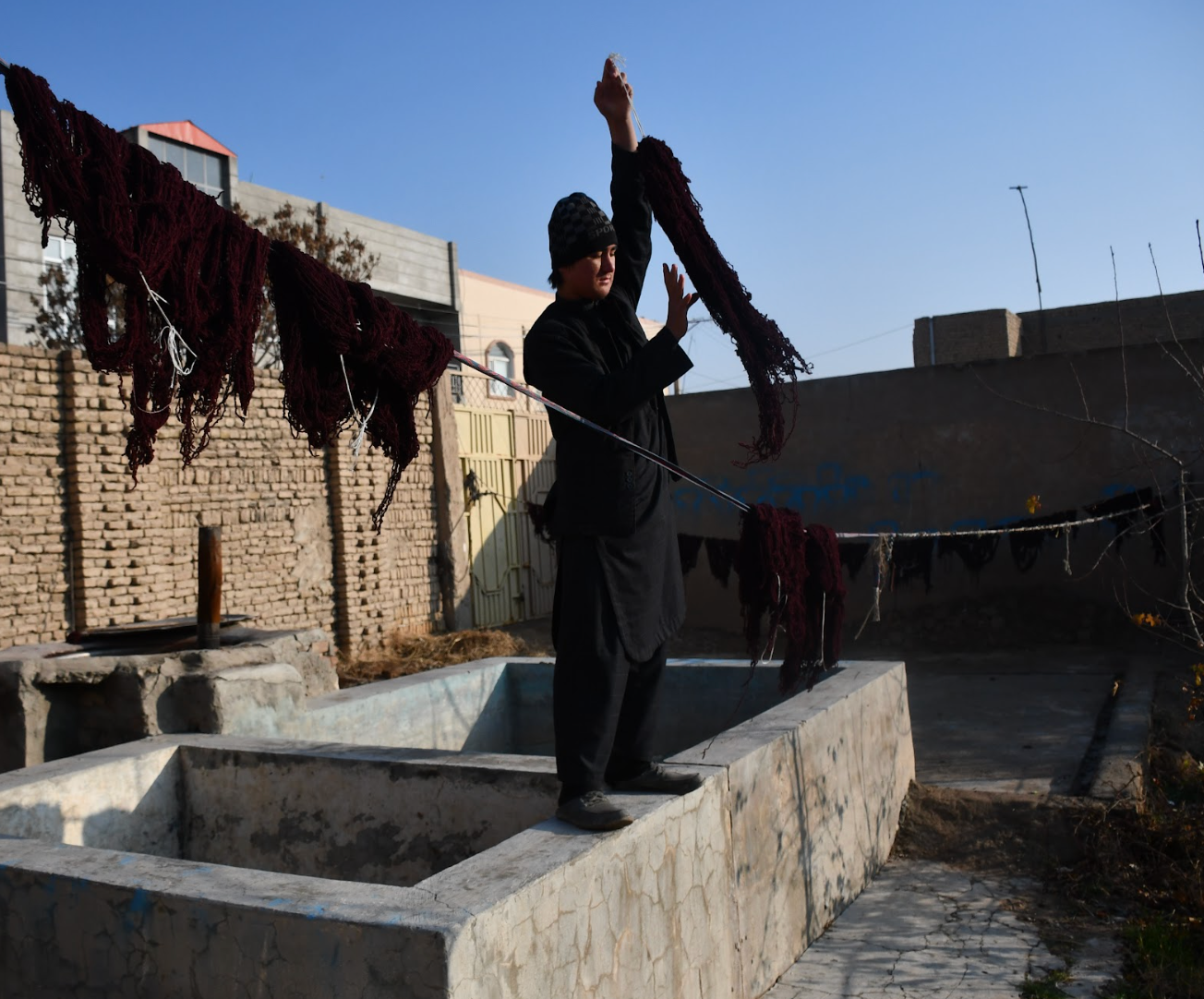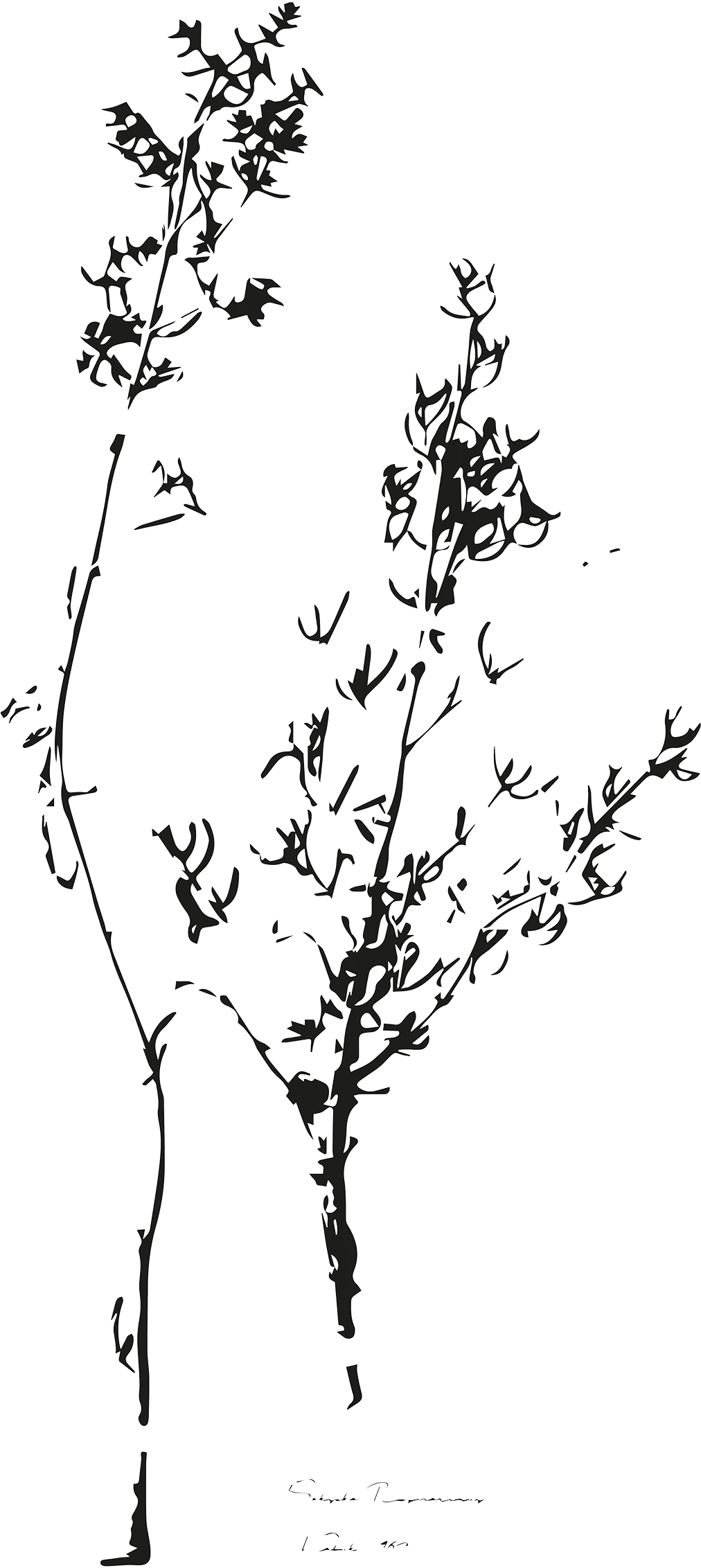Story
The Impact
Kilim weaving is one of the few livelihoods now available to women in Afghanistan. We’ve been working with kilim weavers in Afghanistan for years, initially working with women who’d been internally displaced because of drought, and now we’ve expanded our enterprise to other weavers across the country. With the new restrictions from the Taliban, women are prevented from almost all employment but weaving from home is one of the few livelihoods possible. Every kilim purchased will go directly back to the hands of the people who made it.

The Design
These colourful kilims were designed in collaboration with Paris based atelier Bangla Begum. The cities featured are those that three of ISHKAR’s Afghan partners left and are now living in. One connects Qmars* - an award-winning photographer trained as a medic, now living in Paris - born in the northern city of Mazar-i Sharif, Qmars worked as a photographer for AFP in Afghanistan and is now in Paris and keen to return to his training and become a epidemiologist. Another relates to Sajjad Husaini, a ski champion from Bamiyan (the first Afghan to qualify for the Olympics), who moved with his family to Schwenningen in Germany in 2021. Finally, the link between Kabul & Flensburg is about Saboor Azizi, ISHKAR’s lifesaving logistics manager’s journey. Read more on each partner below. *Name been changed for anonymity

The Wool
Part of what makes Afghanistan’s kilims so special is the wool they are made from. Each strand of wool is individually spun by hand, giving the kilims great character. With its unusually long strands Ghazni wool is also famously hardwearing, meaning Afghan carpets can survive for centuries.


















